Making Panorama Photos Out Of Multiple Photos
Recently I’ve become aware of Panorama Tools, which are a collection of programs for putting multiple overlapping photos together into one large composite picture. It’s excellent software, giving great results–it’s difficult or impossible in many instances to tell that a resulting photo used to be multiple ones. The problem with it is that it’s not very user-friendly, and very technical. The learning curve is steep. And to me at least, it’s unclear whether the software is still supported, and where the definitive version is.
Because of this, there have sprung up a few graphical-front-ends to this panorama code to make it easier to use. At first, I was only aware of the shareware offerings: PTGUI (€65 to register), and PTAssembler ($39 to register). I’ve tried PTGUI, and it works, but after 30days I wasn’t willing to shell out the $70, so I uninstalled it.
Well, help is here, there is a program called Hugin which is a totally free frontend to the Panorama tools. It’s at version 0.5, meaning presumably things still need to be cleaned up, but I can vouch for the fact that it is already very nicely usable. And of course, it creates great results.
Here are some examples of my first attempts:
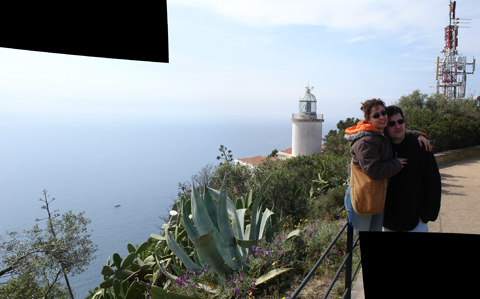
This picture was made from two separate photos that I didn’t take with the intention of stitching them together.
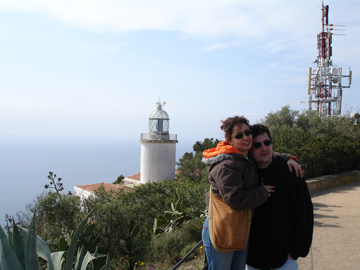
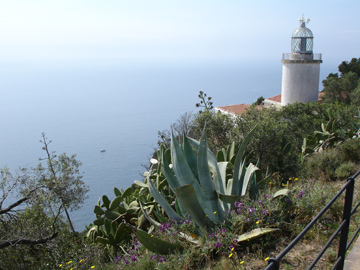
Here are the originals.
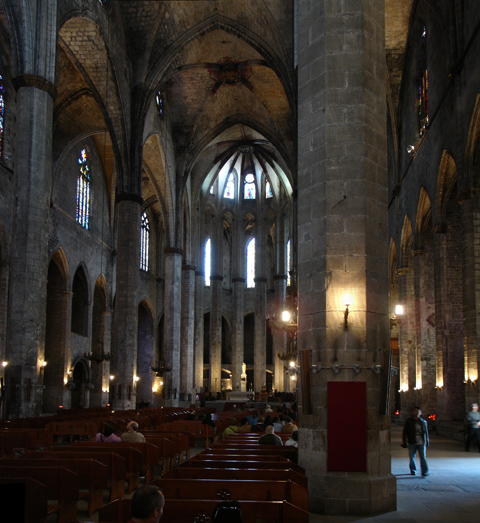
A more impressive example is the inside of Santa Maria del Mar, in Barcelona. I couldn’t physically get this much field of view with my camera, because the lens isn’t wide enough, and I couldn’t back up anymore because I was inside. However, by pivoting the camera and taking a bunch of pictures, I could stitch them together with Hugin and get this great shot. This picture is a composite of 9 separate overlapping pictures. Also, the final composite picture is nearly 10Mpixels, while my camera is only 7Mpixels. I assume if I ever want to make a poster, this would be the way to cheat and get more pixels than my camera can take.
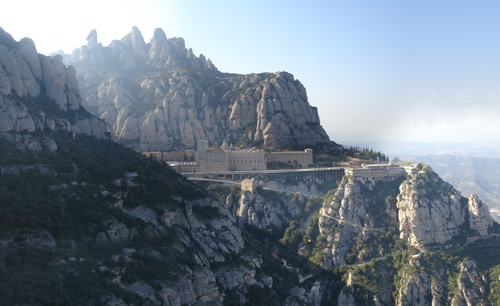
Finally, there’s this beautiful composite of the Monastery on Montserrat, also near Barcelona. It was originally 4 separate photos. It’s not perfect, as you can see that because the original pictures had different exposures, the sky has a funny gradient on the right side. Also, if you’re very observant, you can see that the lower-left corner is completely made-up. I love the “Stamp” tool in photoshop. The original panorama had no photo for the area that is now in the lower left part of the composite, so I copied some mountainside to it in photoshop. Also, there didn’t used to be any sky in the upper right, which was a bit easier just to copy outright.
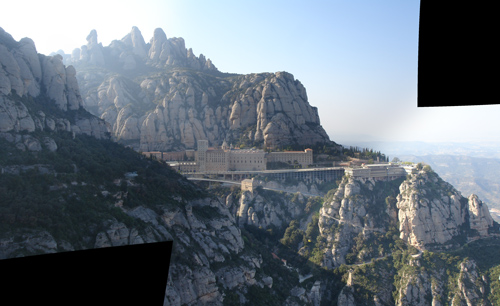
Here’s what it used to look like. Hugin actually produces a copy of each of the component pictures accurately warped and with alpha channels on each photo to allow you to put them together yourself, if you want. If I had spent the time, I could’ve fixed where the seam was between two photos to correct for the strange way the sky changes on the right side of the picture. But it’s pretty cool the way it is, and I was getting lazy…
